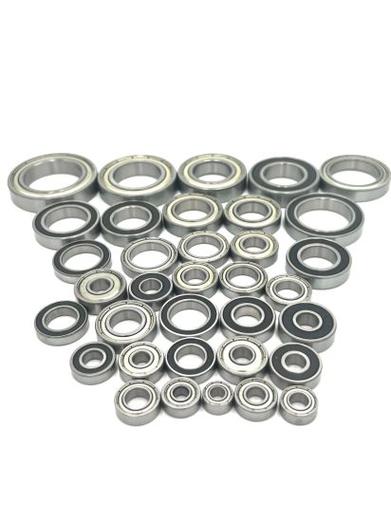High Precision Miniature Bearings for Medical Equipment: Essential Guide to Specifications, Applications, and Selection
High precision miniature bearings are vital components in modern medical equipment, enabling smooth operation and accuracy in devices ranging from surgical robots to diagnostic instruments. These specialized bearings must meet stringent hygiene, durability, and performance standards to ensure reliability in critical healthcare applications.
Table of Contents
1. Medical grade miniature bearings specifications2. High precision bearings for surgical tools
3. Miniature bearing materials for medical devices
4. Cleaning standards for medical bearings
5. FDA-approved miniature bearings
1. Medical grade miniature bearings specifications

Medical-grade miniature bearings require exceptional dimensional accuracy, typically maintaining tolerances within 0.001mm. These components must comply with ISO 13485 quality standards and often feature corrosion-resistant materials like 440C stainless steel or ceramic hybrids. Critical specifications include load capacity ratings for both radial and axial forces, with many medical applications demanding dynamic load ratings exceeding 200N. Operating temperature ranges typically span from -30°C to 120°C to accommodate sterilization processes. Vibration levels must remain below 0.5μm peak-to-peak to ensure precision in sensitive equipment like MRI scanners or robotic surgery systems.
2. High precision bearings for surgical tools
Modern surgical instruments require bearings that combine microscopic precision with exceptional durability. Pneumatic drill bearings often utilize full ceramic designs to withstand speeds exceeding 80,000 RPM while maintaining thermal stability. Orthopedic saws frequently employ hybrid bearings with silicon nitride balls and stainless steel races to balance impact resistance and smooth operation. These components must maintain ABEC 7 or higher precision grades while resisting autoclave sterilization cycles. Advanced surface treatments like diamond-like carbon (DLC) coatings reduce friction coefficients below 0.001, crucial for delicate procedures requiring surgeon tactile feedback.
3. Miniature bearing materials for medical devices
Material selection for medical bearings involves balancing biocompatibility with mechanical performance. 316L vacuum-melted stainless steel remains popular for its corrosion resistance and cleanability. Ceramic bearings using zirconia or alumina oxide provide electrical insulation and chemical inertness for imaging equipment. Emerging trends include PEEK polymer cages that eliminate metal contamination risks in MRI environments. Antimicrobial silver-ion coatings are being adopted for prosthetics bearings to prevent biofilm formation. All materials must meet USP Class VI biocompatibility standards and demonstrate fatigue life exceeding 50 million cycles in accelerated testing.
4. Cleaning standards for medical bearings
Medical bearing cleaning protocols exceed standard industrial practices. Components undergo ultrasonic cleaning in pharmaceutical-grade solvents followed by ISO Class 5 cleanroom assembly. Passivation processes using nitric acid solutions enhance corrosion resistance while removing free iron particles. Validation testing includes particulate counts below 100 particles/ml >5μm and endotoxin levels <0.25 EU/ml. Many manufacturers implement double-pack sterilization with gamma radiation (25-40 kGy) and ethylene oxide treatments. Documentation must comply with FDA 21 CFR Part 820 requirements, including full material traceability and batch-specific cleanliness certificates.
5. FDA-approved miniature bearings
FDA-compliant bearings require rigorous documentation including Design History Files (DHF) and Device Master Records (DMR). Manufacturers must maintain ISO 13485 certification with annual audits. Key approval considerations include material biocompatibility (ISO 10993), leachable substance testing, and validation of sterilization methods. Many medical bearings carry USP Class VI certification for prolonged tissue contact. Recent FDA guidance emphasizes cybersecurity in smart bearings with embedded sensors, requiring encryption of wireless data transmission. Approved suppliers must provide full chemical composition disclosure and manufacturing process validation reports.
From understanding critical specifications to navigating FDA compliance, selecting the right miniature bearings requires careful consideration of multiple technical and regulatory factors. The insights provided on material science, surgical tool requirements, and sterilization protocols create a comprehensive framework for engineers designing next-generation medical devices. As technology advances with smart bearing integrations and antimicrobial treatments, staying informed about these key areas becomes increasingly vital for developing reliable, life-saving medical equipment.
This comprehensive guide has explored the essential aspects of high precision miniature bearings in medical applications. From material science to regulatory compliance, each element contributes to creating reliable components that meet the exacting demands of modern healthcare technology. By understanding these critical factors, engineers and procurement specialists can make informed decisions that enhance device performance while ensuring patient safety.




 13869596835
13869596835